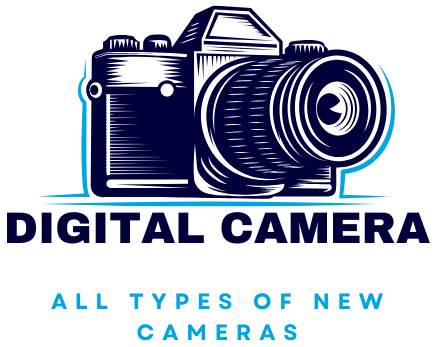How to use a DSLR for documentary-style photography
| We have chosen the BEST photography digital camera with bargain price Now just for you ! Click HERE to check our different photography digital camera for your need. Team chose the BEST Digital Camera |
How to Use a DSLR for Documentary-Style Photography
Documentary-style photography captures the essence of real-life events, emotions, and stories. Using a DSLR for this purpose allows you to achieve stunning images that convey powerful narratives. Whether you’re a beginner or an advanced photographer, mastering your DSLR can definitely help you create captivating documentary photographs. In this article, we will explore practical tips, settings, techniques, and case studies that will enhance your skills and elevate your documentary photography.
Understanding Documentary-Style Photography
Documentary photography is not just about taking pictures; it’s about storytelling. This genre aims to chronicle meaningful and ordinary moments alike, highlighting truth and authenticity. Here are some key elements to consider:
- Storytelling: Every photograph should tell a story or convey a message.
- Authenticity: Focus on real-life situations rather than staged scenarios.
- Emotion: Capture candid moments that evoke feelings in the viewer.
Benefits of Using a DSLR for Documentary Photography
Choosing a DSLR for documentary photography has several advantages:
- Image quality: DSLRs typically offer superior image quality and low-light performance compared to smartphones and point-and-shoot cameras.
- Interchangeable Lenses: The ability to swap out lenses allows for various shooting styles and effects.
- Manual Control: DSLRs give you fine control over settings, which can be crucial in dynamic shooting conditions.
Essential Gear for Documentary Photography
In addition to your DSLR, consider the following essential gear:
- Lens: A versatile lens such as a 24-70mm or a prime lens like the 50mm f/1.8 is ideal for capturing a range of scenes.
- Tripod: Useful for stability during long exposures or low-light conditions.
- external Flash: Can be used to enhance lighting in dim environments.
- Extra Batteries and Memory Cards: Always be prepared for long shoots by carrying spares.
Setting Up Your DSLR for Documentary Photography
Properly setting up your DSLR can make a significant difference in the outcome of your photos. here’s a breakdown of key settings:
| Setting | Description | recommendation |
|---|---|---|
| ISO | Controls the camera’s sensitivity to light | Start at ISO 100 and increase as needed in low light |
| Aperture (f-stop) | Affects depth of field and light entering the lens | Use a wide aperture (e.g., f/2.8) for portraits and smaller for landscapes (e.g., f/8) |
| Shutter Speed | Determines how long the shutter is open, affecting motion blur | Use 1/200s for moving subjects; longer for stills |
Techniques for Capturing Compelling Documentary Images
To take breathtaking documentary-style photographs, consider the following techniques:
1. Be Patient and Observant
Documentary photography frequently enough requires waiting for the right moment. Be attentive to your surroundings and ready to capture spontaneous moments.
2. Use Natural Light
Natural light can enhance the authenticity of your photos. Shoot during golden hours (early mornings or late afternoons) for the best lighting.
3. Focus on Candid Moments
Pose individuals as little as possible to maintain realism.Capture them in their natural environment doing their everyday tasks.
4. Experiment with Compositions
Use leading lines, etc. to draw viewers into the story you’re trying to tell. Don’t be afraid to fill the frame or include negative space for contrast.
Editing for Impact
Post-processing is essential in documentary photography. Consider the following editing tips:
- Crop for Composition: Adjust framing to strengthen the image’s storytelling.
- Contrast and Exposure: Fine-tune these settings to ensure your subject stands out.
- Color Grading: Use warm tones for a nostalgic feel or a muted palette for a serious tone.
Case study: Capturing a Local Event
To put theory into practice,let’s examine a case study where a photographer documents a local cultural festival. This scenario showcases various documentary photography principles:
- Preparation: The photographer researches the event, creating a shot list and arriving early.
- Candids: The photographer captures unposed moments of attendees enjoying the festivities.
- Story Arc: The final series visually narrates the event from setup to festivity.
First-Hand Experience: What I Learned
As an avid documentary photographer, I learned the following valuable lessons on my journey:
- Embrace Mistakes: Early on, I missed many grate shots but learned from each one.
- Communicate with Subjects: Building rapport leads to more authentic expressions and interactions.
- Practice, Practice, Practice: The more I shoot, the better my storytelling skills become.
Conclusion
Using a DSLR for documentary-style photography can be both rewarding and challenging. By understanding the principles of documentary photography, equipping yourself with the right tools, and practicing essential techniques, you can capture powerful narratives that resonate with audiences. Embrace failure as a part of your learning journey and continue to refine your skills. The world is full of stories waiting to be told, and your DSLR is the perfect companion for capturing them. Start documenting your observations, and see how considerably your photography evolves!
| We have chosen the BEST photography digital camera with bargain price Now just for you ! Click HERE to check our different photography digital camera for your need. Team chose the BEST Digital Camera |
